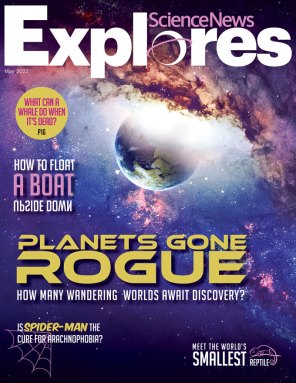A new Science News for the young people in your life

By Nancy Shute
Editor in Chief
- More than 2 years ago

Learning amazing new things about science is a delight — and sharing those amazing things with others is even better. That’s a big reason why we’ve been publishing Science News for more than 100 years. And that’s why we’ve launched a new print magazine for young people called Science News Explores.
Maya Ajmera, our publisher, president and CEO, is a parent herself. She envisions the magazine as a way for kids to connect with science that doesn’t feel like homework, and that doesn’t involve staring at a screen. “Science News Explores is written in a way that middle school children can fully understand,” she says, “while still being a great read for adults.”
We know a thing or two about kids and science, having reported for young people since 2003 with our award-winning Science News for Students website. “They ask really great questions,” says Sarah Zielinski, editor of Science News Explores and managing editor of Science News for Students. “I want to feed that curiosity and help them hold onto it as they grow into adults.”
And you’ll find reporting by your favorite Science News journalists in Science News Explores too. Our writers and editors are masters at making complex science accessible to younger readers, while not dumbing it down. It may surprise you to learn that the articles, many of which are adapted from Science News articles, are often longer, because technical terms need to be replaced by explanation. It’s a reminder of how often fields of science, or any field of expertise, develop shorthand terminology that makes communication within the field easier, but can make it harder for others to understand.
The inaugural issue includes an introduction to what may be the world’s tiniest reptile; a conversation with Tiera Fletcher, who designs spacecraft that may fly people to Mars; and a voyage to the ocean depths. By steering a remote-controlled camera along the seafloor, scientists have learned how a whale’s carcass helps feed more than 100 species, including “snotflowers.” Readers can also use a map of Mount Everest to learn how tiny bits of plastic have made it to the world’s highest peak. And you’ll find out whether seeing a movie about Spider-Man may help tame fear of arachnids in real life. We hope you’ll share the joy of science with a young person in your life by giving them a subscription to Science News Explores. I hope you’ll enjoy the magazine as much as we’ve enjoyed creating it for the next generation of science fans.